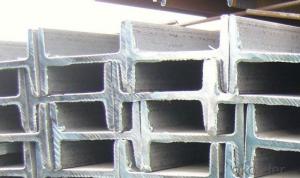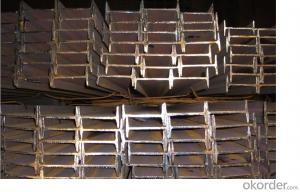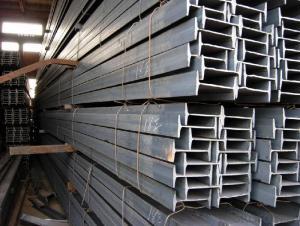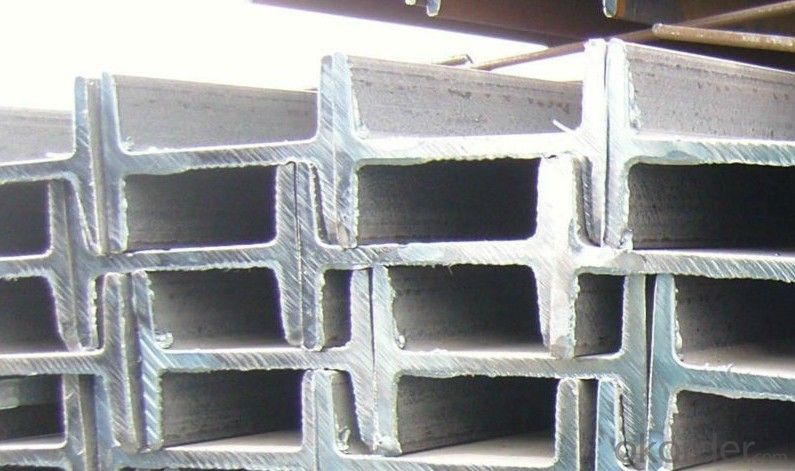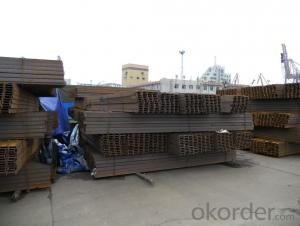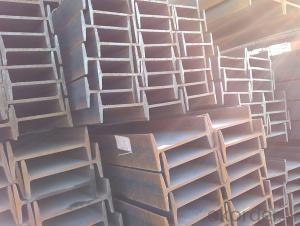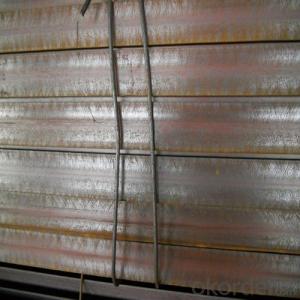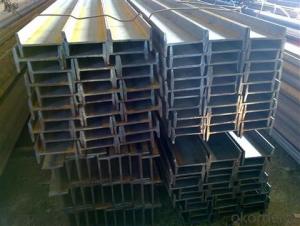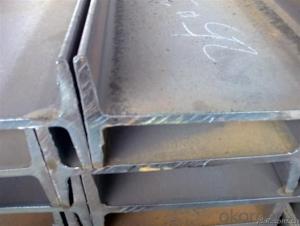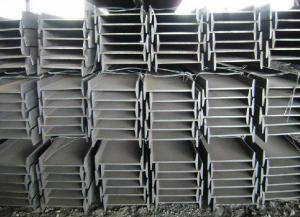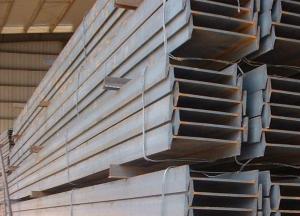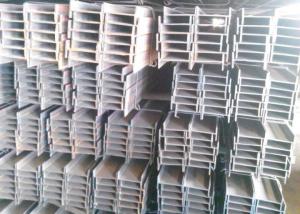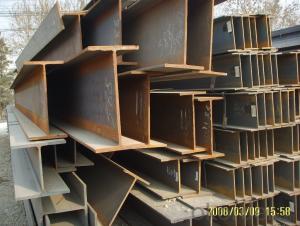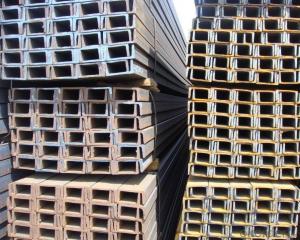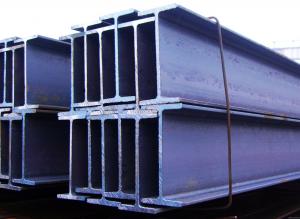Hot Rolled Steel I-Beams Q235, A36 for Construction
- Loading Port:
- China main port
- Payment Terms:
- TT or LC
- Min Order Qty:
- 25000 m.t.
- Supply Capability:
- 200000 m.t./month
OKorder Service Pledge
OKorder Financial Service
You Might Also Like
Product Description:
Specifications of Hot Rolled Steel I-Beams Q235, A36 for Construction:
1. Invoicing on theoretical weight or actual weight as customer request
2. Length: 5.8m, 6m, 9m, 12m as following table
3. Sizes of Steel I-Beams: 80mm-270mm
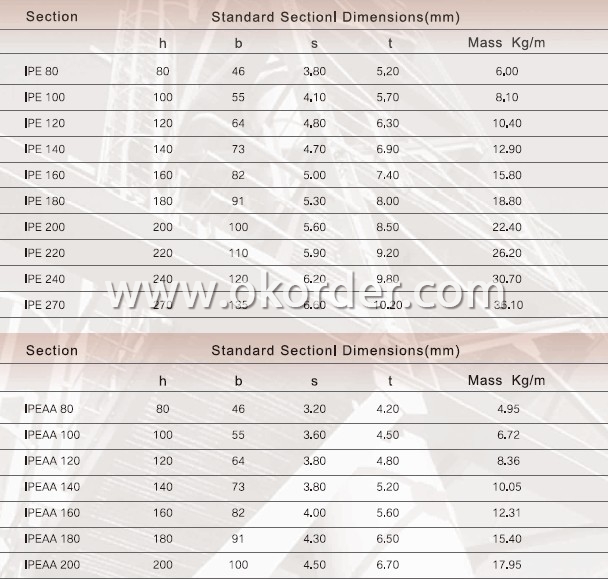
Dimensional Specifications of Steel I-Beams: EN10025, ASTM, GB Standard, JIS, etc.
Material Specifications of Steel I-Beams: EN10025, S235JR, GB Q235B or Equivalent
Applications of Hot Rolled Steel I-Beams Q235, A36 for Construction:
Commercial building structure
Pre-engineered buildings
Machinery support structures
Prefabricated structure
Medium scale bridges
Package & Delivery of Hot Rolled Steel I-Beams Q235, A36 for Construction
1.Package: All the products are packed in bundles and tied by steel wire rod then put into containers or in bulk cargo. Each bundle of I-Beam will be hung with the markings of CNBM or as the requriements of the customer. Each bundle contains about 50 pieces.
2.Tag mark: there will be tag mark tied up on the bundles. The information usually including supplier logo and name, product name, made in China, shipping marks and other information request by the customer.
If loading by container the marking is not needed, but we will prepare it as customer request.
3. Delivery: The Steel I-Beams will be delivered to the loading port in 45 days after receiving your advance payment or the original L/C at sight.
Transportation: the goods are delivered by truck from mill to loading port, the maximum quantity can be loaded is around 40MTs by each truck. If the order quantity cannot reach the full truck loaded, the transportation cost per ton will be little higher than full load.
FAQ:
Q1: Why buy Materials & Equipment from OKorder.com?
A1: All products offered byOKorder.com are carefully selected from China's most reliable manufacturing enterprises. Through its ISO certifications, OKorder.com adheres to the highest standards and a commitment to supply chain safety and customer satisfaction.
Q2: How do we guarantee the quality of our products?
A2: We have established an advanced quality management system which conducts strict quality tests at every step, from raw materials to the final product. At the same time, we provide extensive follow-up service assurances as required.
Q3: How soon can we receive the product after purchase?
A3: Within three days of placing an order, we will begin production. The specific shipping date is dependent upon international and government factors, but is typically 7 to 10 workdays.
Images:
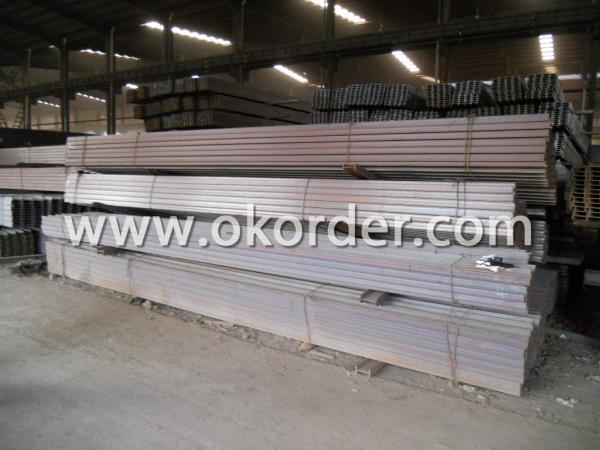
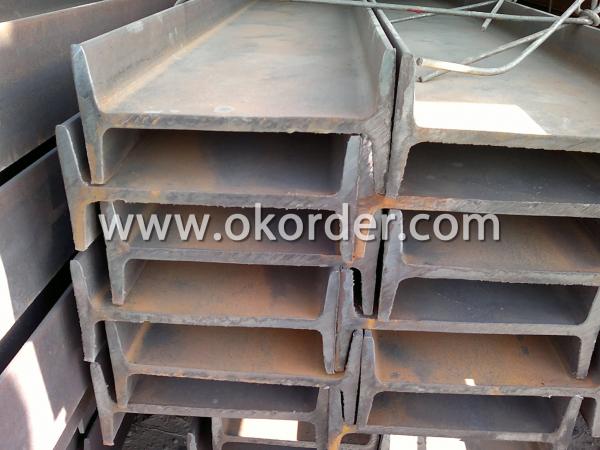
- Q: Are I-beam and H steel the same thing?
- First of all, H steel flange width, and secondly, the inner edge of the flange has no slope, parallel to the upper and lower surfaces. The section characteristic of H steel is obviously better than that of traditional i-beam. Type steel flange head, flange surface with gradient (1: 6), the flange is thin and thick, resulting in two main I-beam section characteristic plane is huge, it is difficult to play the strength characteristics of steel in the application. I-beam has been gradually eliminated by section H steel.I-beam, also called steel girder, is a long strip steel with cross section. Simple to distinguish from the surface: steel side of small, high height, can only bear the force of single direction. The H steel groove is deep and big in thickness and can bear two directions of force. With the development of steel structure construction, only I-beam is not available, that is thickening I-beam, used for load-bearing columns, easy to instability. I-beam can only be used for cross beams, and H steel can be used for structural load-bearing columns.
- Q: How do steel I-beams perform in long-span structures?
- Steel I-beams are commonly used in long-span structures due to their excellent performance. These beams have a high strength-to-weight ratio, which allows them to support heavy loads over long distances without excessive deflection or bending. The I-beam's design, with a flange on either side of the web, provides increased stability and resistance to torsional forces. This makes them well-suited for long-span structures where stability and load-bearing capacity are essential. Additionally, steel I-beams are highly durable and resistant to corrosion. This makes them suitable for long-span structures exposed to harsh environmental conditions, such as bridges or industrial facilities. Furthermore, steel I-beams can be easily fabricated and assembled, allowing for efficient construction processes in long-span structures. Their versatility and availability in various sizes and shapes make them adaptable to different design requirements. In summary, steel I-beams perform exceptionally well in long-span structures. They offer high strength, stability, and load-bearing capacity while being durable and easy to construct. These qualities make them a popular choice for architects and engineers when designing structures that require support over extended distances.
- Q: Channel and I-beam are commonly used in construction sites. It is better to have on-site construction drawings, thank you
- Channel and I-beam are usually used to build floors.
- Q: What is the typical lifespan of steel I-beams?
- Several factors, including the quality of the steel used, the installation environment, and the level of maintenance, can affect the typical lifespan of steel I-beams. However, steel I-beams are generally designed to have a very long lifespan. Under normal conditions, they can last for several decades or longer without any significant deterioration or structural issues. By properly caring for and maintaining them, through regular inspections and necessary repairs, steel I-beams can remain structurally sound and functional for an extended period. It's important to consider factors like exposure to corrosive environments or excessive loads, as these can potentially shorten the lifespan of steel I-beams. Furthermore, advancements in steel manufacturing and coating technologies have enhanced their durability and longevity, making them even more reliable and long-lasting.
- Q: Can steel I-beams be used for wind turbine towers?
- Yes, steel I-beams can indeed be used for wind turbine towers. These beams are commonly used in the construction of wind turbine towers due to their strength, durability, and ability to withstand the high wind loads experienced in such structures.
- Q: Can steel I-beams be used in the construction of parking garages?
- Yes, steel I-beams can be used in the construction of parking garages. In fact, they are commonly used due to their strength, durability, and cost-effectiveness. Steel I-beams can support heavy loads and span long distances, making them ideal for large structures like parking garages. They are also resistant to fire, corrosion, and pests, ensuring the longevity of the parking garage. Additionally, steel I-beams can be prefabricated, allowing for faster and more efficient construction. Overall, the use of steel I-beams in parking garage construction provides structural integrity and safety for the building while also offering flexibility in design.
- Q: Can steel I-beams be used in mezzanine floor construction?
- Yes, steel I-beams can be used in mezzanine floor construction. Steel I-beams are commonly used in construction due to their strength, durability, and ability to support heavy loads. In mezzanine floor construction, I-beams can be used as primary structural elements to support the weight of the floor and any additional loads. They can be installed horizontally or vertically, depending on the design and requirements of the mezzanine floor. Additionally, steel I-beams can be easily fabricated and customized to meet specific project needs, making them a popular choice in mezzanine floor construction.
- Q: Can Steel I-Beams be used for retail or shopping centers?
- Steel I-Beams have the capability to be utilized in retail or shopping centers. They are frequently employed in construction projects because of their strength, durability, and versatility. These beams offer exceptional structural support and have the capacity to bear heavy loads, making them appropriate for expansive retail or shopping centers that necessitate open floor plans and high ceilings. Moreover, Steel I-Beams possess high resistance against fire, pests, and corrosion, which is imperative in maintaining the safety and longevity of retail spaces. Furthermore, their capability to span long distances without the need for additional support columns allows for a more flexible and efficient utilization of space, enabling the creation of expansive retail areas. In summary, Steel I-Beams are a favored choice in the construction industry for retail or shopping centers due to their numerous advantages and ability to meet the specific requirements of these types of buildings.
- Q: How are steel I-beams installed in construction projects?
- Steel I-beams are installed in construction projects by first preparing the foundation to ensure it can support the weight of the beams. The I-beams are then hoisted into position using cranes or other heavy machinery. They are aligned and secured to the foundation or supporting structures using bolts, welding, or other appropriate methods. This installation process ensures the I-beams provide structural integrity and support for the building or structure.
- Q: Are steel I-beams subject to any weight restrictions during transportation?
- Yes, steel I-beams are subject to weight restrictions during transportation. The weight restrictions vary depending on the mode of transportation being used, such as trucks, trains, or ships. Each mode has specific weight restrictions to ensure the safe transportation of the I-beams and to comply with regulations. The weight restrictions are in place to prevent overloading and potential damage to the transportation vehicle, infrastructure, or other cargo being transported alongside the I-beams. It is essential to adhere to these weight restrictions to maintain the integrity and safety of the transportation process.
Send your message to us
Hot Rolled Steel I-Beams Q235, A36 for Construction
- Loading Port:
- China main port
- Payment Terms:
- TT or LC
- Min Order Qty:
- 25000 m.t.
- Supply Capability:
- 200000 m.t./month
OKorder Service Pledge
OKorder Financial Service
Similar products
Hot products
Hot Searches
Related keywords
